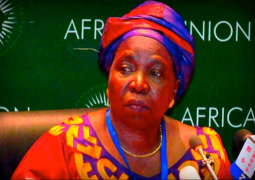Indeed, real purchasing power has been severely affected, as the dalasi struggles against major international currencies such as US dollar, British pound and the CFA franc.
This is a clear indication of the depreciation of the dalasi against these major currencies.
Economists say that a currency depreciates when that currency is worth less compared to another nation’s currency, just like what is currently happening to the dalasi.
In a floating exchange rate system, such as we have in The Gambia, the national currency is bound to rise and fall in value.
Actually, this does happen from time to time, and it is essential for people to know that there are many factors responsible for such a development.
Among the factors responsible could be the supply and demand for the local currency against the major international currencies.
This is one key determinant of the way that currencies appreciate and depreciate against each other.
Currency values usually depend on market forces, such as supply and demand in the market, as well as other economic factors, and even on political actions and omissions.
In addition, the comparative rates of interest and inflation, as well as the cost of money in a country make up a large part of how a currency is valued in relation to other currencies.
Some governments and central banks do intervene in the currency markets to stabilize or manipulate the value of their currencies.
From these, we can also see that bad government economic policies do also play a role in situations like this.
Thus we need to tread carefully in handling the current crisis in the foreign exchange market.
In a situation where the central bank is supposed to be independent in determining monetary policy and so on, any heavy-handed government interference in the operations of the market could have unintended negative consequences.
We understand from an economist that inflation is one of the main factors in currency depreciation. This is because when inflation occurs, the general prices of goods and services would be on an increasing trend.
The uncertainty about developments in food and energy prices sometimes further increase inflationary expectations.
In any case, the reality is that the increase in food prices coupled with the strong growth in the monetary aggregates, the recent sharp depreciation of the dalasi and high inflationary expectations are expected to exert further pressure on domestic prices.
Even though there is no need for alarm, since currency deprecation is a common phenomenon, a continuing trend could be a serious cause for concern.
To address the situation, the strengthening of the Dalasi would require great efforts at the domestic level.
The expected good harvest this year could be one way out.
‘’Economy does not lie in sparing money, but in spending it wisely.’’
Thomas Huxley



